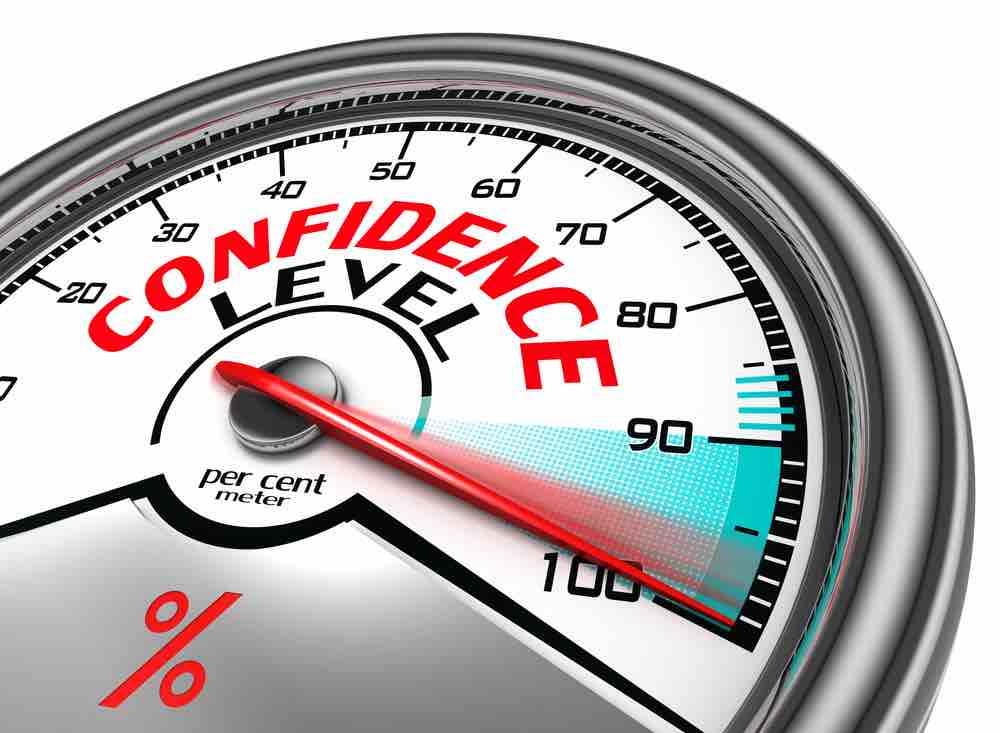Would you like to possess overflowing self-confidence?
Self-confidence gives you the solid sense of certainty you need to make the right decisions, take positive action, and provide leadership or support to others.
You can, regardless of what you have tried in the past or how much you doubt yourself right now. How can I make this claim?
Because – based on NLP training – I understand the cornerstone principles upon which self-confidence is based. By the end of this short article, you will understand them, too.
Once you understand the four cornerstones of self-confidence, all you need to do is put them in place in areas of your life where you lack self-confidence. It’s that simple! If you read this entire article and invest a little thought by doing the self-assessment at the end, you will be on your way.
Cornerstones of Solid Self-Confidence
True confidence doesn’t come from a technique, but by putting four cornerstones in place. When the cornerstones are there, the foundation is solid and self-confidence is the inevitable result.
Self-confidence is like the framing of your house. It doesn’t matter which technique the framer used to drive the nails. The brand name of the tools and even the contractor’s education don’t matter, either.
What matters is whether or not the framework was assembled correctly. If principles of architectural integrity were properly employed, you have something solid.
Deep and lasting self-confidence or self-esteem is the same. Confidence does not come from self-help techniques, but from principles that you must apply, regardless of any additional self-confidence techniques you use. Here are four cornerstone principles to apply to each situation in your life where you need greater self-confidence.
1. Self-confidence flows in proportion to competence.
Imagine being asked to pilot a Boeing 777 with a full cabin full of passengers. Your confidence to perform the task should directly relate to your training and experience (competence). On a scale of 1-10, your level of confidence might look something like this:
10 – Trained commercial pilot with experience
8 – Trained commercial pilot with limited experience
5 – Highly experienced private pilot (small jets)
2 – An private pilot who flies Cessna aircraft
0 – An average person with no training or experience
If you isolate the competence factor, it makes perfect sense. You are confident to the degree you are competent. It is impossible to be confident doing something important that you simply do not know how to do.
All else being equal, you will be more confident snow skiing if you are skilled at snow skiing. You’ll feel more at ease with public speaking if you have developed the communication skills that apply. You will be very confident in making friends with new people if you have learned and practiced what works to make new friends. Simple!
Competence alone does not guarantee self-confidence because this is only one of the four cornerstones. If the other three are not in place, competence will not be enough. However, competence is a very influential factor. If you are not competent to do something you feel is important, you cannot enjoy full confidence doing it.
2. Self-confidence is measured by the size of the container.
Is one gallon a lot of milk? That depends. A gallon of milk is an overwhelming amount to place in a thimble. It seems like a mere drop if you pour it into a milk tanker.
If amounts of physical things are relative, self-confidence is even more so. Do you have a lot of self-confidence? That depends on what you are planning to do with it. How large are your ambitions? Are you attempting to tie your shoes or run a country?
The confidence you need is proportional to the size of the task.
I have a lot of confidence in speaking in front of a few people. When I consider speaking in front of thousands of people, that confidence wears pretty thin. Even though I might speak the same words, the larger context changes my confidence dramatically.
We can apply this idea to a variety of situations. I might be comfortable running a department, but not a whole company. I might feel fine taking on a new goal, but not three. I feel confident that I can generate a few thousand extra dollars this month, but not a few million. With confidence, context matters. The smaller the relative size, the less confidence is required to fill the need.
3. Self-confidence is related to how you perceive others.
Over the years I have worked with a lot of people who fear public speaking. Most scare themselves by holding a terrifying image of their audience. They imagine being in front of the room, being stared at by big-eyed, zombie-like creatures who are judging them critically.
However, when see individual audience members as real, living, breathing people, you tend to relax. Seeing others as people is a cornerstone of genuine self-confidence because others are an integral part of your life. As soon as you begin to see others as less than real (or as objects), your anxiety increases, and your self-confidence decreases.
Have you ever been nervous around someone whom you had on a pedestal? Then, when you discovered their weaknesses, mistakes or limitations, you gained more confidence around them, right?
When you see others as the real, vulnerable human beings they actually are, your confidence increases. This is genuine confidence, not the confidence that tries to be better than others, but the confidence that can identify and connect with others.
4. Self-confidence is the result of your personal belief system.
The fourth and final cornerstone of self-confidence is a belief system that allows for it. Beliefs act as a lens through which you see the world and can either encourage or discourage confidence. Imagine putting on an imaginary pair of eyeglasses that installed a belief lens through which you see the world.
Imagine looking through glasses with the lens: I am a decent and worthwhile person. This kind of belief fosters confidence for sure. Also try: I have a lot to contribute, another confidence builder.
When your belief lenses are I can’t do anything right or I am worthless, your confidence disappears, even if all the other cornerstones are in place. A deep, negative belief can undercut them all and leave you without hope of success.
Holding mixed beliefs produces mixed results. It is possible for a human being to believe in contradictory ideas. You may believe that you are both worthless and worthwhile. Contradictory beliefs compete with each other. While you are feeling worthwhile, you move forward with confidence. As soon as the negative belief comes into play, your confidence sours and you may sabotage yourself.
Self-confidence doesn’t happen because of some whiz-bang self-help method. It is created by putting into place the four cornerstones.
Your confidence will overflow when:
1. You are competent to do the task before you.
2. The size, context, or scope of the task is within your comfort zone.
3. You see others involved as real people like you.
4. Your personal beliefs encourage you.
Rate your self-confidence to clarify where you need to improve.
Choose a task or personal goal that is important to you. Then, rate yourself on a scale of 1-10 in each of the cornerstone areas. If you look at statements 1-4 above, how true are they for you in the area of your goal? Give each area a score.
A perfect score of 40 means you should enjoy incredible confidence (if you don’t, then you fooled yourself in your assessment).
Which areas need improvement? Identifying where your weakness comes from is the first step toward resolution.


